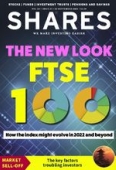Archived article
Please note that tax, investment, pension and ISA rules can change and the information and any views contained in this article may now be inaccurate.
Help, I don’t understand the flexi-access options for pensions

I want to take annual lump sums from my pension pot in retirement, each made up of a 25% tax-free component and the balance in taxable income subject to my personal tax allowance. I don’t want to take all of my 25% tax free at the outset.
I can’t see the difference between flexi-access drawdown/partial flexi-access drawdown and UFPLS as methods to do this. Please explain including pros and cons of each.
Peter
Tom Selby, AJ Bell Head of Retirement Policy says:
As always, let’s just dig out some of that jargon first
before getting to the nub of your question. Savers with defined contribution pensions like SIPPs are entitled to 25% tax-free cash from age 55, although this is due to rise to age 57 in 2028.
To access your tax-free cash, you need to ‘crystallise’ your pension – this just means choosing a retirement income route.
The main options available are:
• Flexi-access drawdown: keep your money invested and take an income to suit your needs.
• Ad-hoc lump sums (also referred to as ‘UFPLS’): take individual chunks out of your pension pot, with 25% of each chunk tax-free and the rest taxed in the same way as income.
• Annuity: secure a guaranteed income for life from an insurance company in return for your pension pot.
It is also possible to combine these options.
Taking ad-hoc lump sums and partial flexi-access drawdown amount to broadly the same thing, with similar outcomes.
The key difference with partial flexi-access drawdown is you can choose to drip feed your crystallised taxable income, whereas with ad-hoc lump sums you need to take all the taxable income in one go. Drip feeding income can be useful in managing your tax liabilities.
Let’s look at an example. Hilary has a £100,000 pension pot and wants to access £5,000 a year from her fund, with 25% of each withdrawal tax-free.
She could either:
• Take a £5,000 ad-hoc lump sum each year, or
• Partially crystallise £5,000 in flexi-access drawdown each year.
In both circumstances Hilary will receive £1,250 in tax-free cash, with the remaining £3,750 taxed in the same way as income. However, with flexi-access drawdown she could, for example, choose to access part of the £3,750 in the current tax year and part of it in the next tax year.
One of the main advantages of taking your pension in partial chunks – either via flexi-access drawdown or ad-hoc lump sums – is that your remaining tax-free cash entitlement has the opportunity to grow over time.
If the investments in the uncrystallised part of your fund go down in value then so will the attached tax-free cash entitlement.
You should be aware that if you plan to take single taxable withdrawals in each tax year, then it is likely you will be overtaxed initially by HMRC (this shouldn’t be a problem if you decide to take a regular income). This over-taxation will only apply to the taxable part of your withdrawal.
To reclaim your tax, you will need to fill out one of the following forms:
• If you’ve emptied your pot by flexibly accessing your pension and are still working or receiving benefits, you should fill out form P53Z.
• If you’ve emptied your pot by flexibly accessing your pension and aren’t working or receiving benefits, you should fill out form P50Z.
• If you’ve only flexibly accessed part of your pension pot then use form P55.
You can find the forms online here.
Provided you fill out the correct form HMRC says you should receive a refund of any overpaid tax within 30 days.
DO YOU HAVE A QUESTION ON RETIREMENT ISSUES?
Send an email to asktom@sharesmagazine.co.uk with the words ‘Retirement question’ in the subject line. We’ll do our best to respond in a future edition of Shares.
Please note, we only provide information and we do not provide financial advice. If you’re unsure please consult a suitably qualified financial adviser. We cannot comment on individual investment portfolios.
Important information:
These articles are provided by Shares magazine which is published by AJ Bell Media, a part of AJ Bell. Shares is not written by AJ Bell.
Shares is provided for your general information and use and is not a personal recommendation to invest. It is not intended to be relied upon by you in making or not making any investment decisions. The investments referred to in these articles will not be suitable for all investors. If in doubt please seek appropriate independent financial advice.
Investors acting on the information in these articles do so at their own risk and AJ Bell Media and its staff do not accept liability for losses suffered by investors as a result of their investment decisions.
Issue contents
Editor's View
Feature
Great Ideas
- China exposure is a key risk for Lindsell Train Equity Fund
- Alliance Pharma's growth potential remains underappreciated
- Why this Japanese trust has gained 15% in a month
- Close to 50% gain from Equals since April, more to come?
- Want Asia exposure but worried about China? Try Vietnam
- A brighter outlook for property makes this 5% yielding trust a bargain

 magazine
magazine








